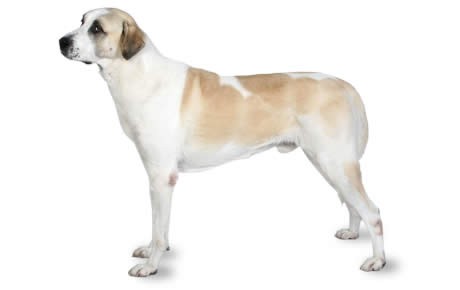An Anatolian Shepherd has a relatively short, dense coat with a thick undercoat. It is flat, close-lying and neither fluffy nor wavy. The coat is slightly longer and thicker at the neck, shoulder and tail, with no feathering on the ears or legs. This double coat is designed to protect the working dog against the extremes of temperature it faces on the bleak high plateau of central Turkey.
The coarse outer coat naturally sheds water and mud while the dense, soft undercoat, which is slightly less thick in summer, provides insulation against the cold and sun.
All Anatolian Shepherds, whether kept as working, pet or show dogs, undergo a complete molt twice a year, a process that takes two to three weeks. The outer hair is loosened and replaced gradually over this period, but the woolly undercoat is shed quite spectacularly, and can be gently plucked away in great handfuls or carefully raked out, taking care not to scratch the skin.
MAINTENANCE:
This is a breed that is comparatively easy to look after. However, it looks stunning after a bath and professional
groom.
PROCEDURE
Equipment needed: Bristle brush, medium-toothed comb.
Breed tip: An occasional bath will help to remove loose hair from the Anatolian’s thick, dense coat.
- Brush through the entire coat with a bristle brush.
- Bathe the dog with a protein pH-balanced shampoo.
- Rinse thoroughly, taking care to ensure all soap has been removed.
- Remove any excess water from the coat while the dog is still in the bath. Follow this by drying the dog in a cage-dryer or by blow-drying. To avoid skin problems, it is important to ensure that the undercoat is not left damp after bathing.
- Check the dog’s nails. The adult dog weighs about 130 pounds (60 kg) and so regular exercise on hard surfaces is normally sufficient to keep the claws naturally short. Hind dewclaws may be present and these will need regular trimming to prevent problems such as overgrowth or snagging.
- Next, check the dog’s teeth and ears. Regular cleaning with antiseptic wipes will avoid irritation caused by the waxy deposit that can build up in warm, damp conditions.

